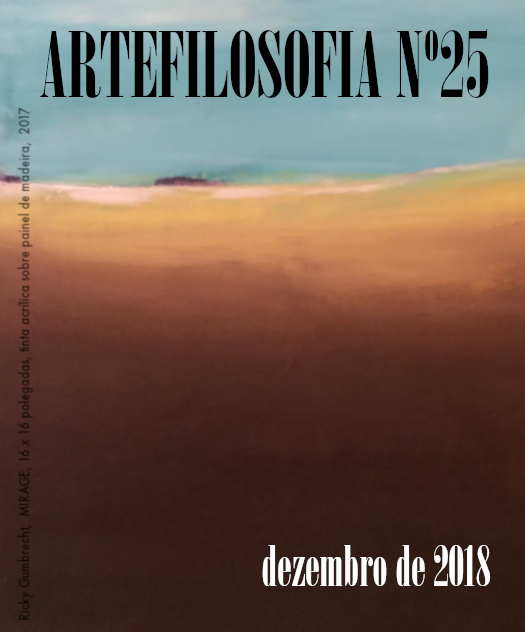A dialogue between Glauber Rocha and Georges Didi-Huberman
Abstract
Setting out from the way in which the curator Georges Didi-Huberman manages, in the Exhibition “Nouvelles Histoires de Fantômes” (2014), the scene of lamentation for the death of a peasant in the film of the Brazilian movie director Glauber Rocha “Terra em transe” (1967), this article intends to discuss the way in which this scene was articulated in that exhibition in a lamentation/uprising scheme. The model is that of Sergei Eisenstein's “Battleship Potemkin” in which a popular uprising broke out immediately after the death of the sailor. The article intends to show that the scheme proposed by Didi-Huberman, if the scene is contextualized in the dramatic economy of the film, does not work, because it falls into a much more complex context in which the Director Glauber Rocha discusses the deadlocks of Brazilian and Latin American Left in the years 1960. Finally, the article sustains that the scene of the lamentation in the film can be understood within a larger conception, present in the films of Glauber Rocha, of a "Third World’s Christ".Downloads
References
DIDI-HUBERMAN, Georges. Que emoção! Que emoção? Trad. Cecília Ciscato. São Paulo: 34
BERBARA, Maria (org.). Renascimento italiano: ensaios e traduções. Rio de Janeiro: NAU, 2010
AMENGUAL, Barthélemy. Glauber Rocha ou les chemins de la liberté. In: “Études cinematografiques” n. 97/98/99, Paris, 1973
VALENTINETTI, Claudio. Glauber: um olhar europeu. São Paulo: Instituto Lina Bo Bardi, 2002.
XAVIER, Ismail. Alegorias do subdesenvolvimento: cinema novo, tropicalismo, cinema marginal. São Paulo: Cosac Naify, 2012.
TRAVERSO, Enzo. Mélancolie de gauche: la force d’une tradition caché (XIXe.-XXIe. siècle). Paris: La Découverte, 2016.
Copyright (c) 2019 Artefilosofia

This work is licensed under a Creative Commons Attribution-NonCommercial-ShareAlike 4.0 International License.
Autores que publicam nesta revista concordam com os seguintes termos:
- Autores/as mantém os direitos autorais e concedem à revista o direito de primeira publicação, com o trabalho simultaneamente licenciado sob a creativecommons.org/licenses/by-nc-sa/4.0/ que permite o compartilhamento do trabalho, com reconhecimento da autoria e publicação inicial nesta revista.
- Autores/as têm autorização para assumir contratos adicionais separadamente, para distribuição não-exclusiva da versão do trabalho publicada nesta revista (ex.: publicar em repositório institucional ou como capítulo de livro), com reconhecimento de autoria e publicação inicial nesta revista.


